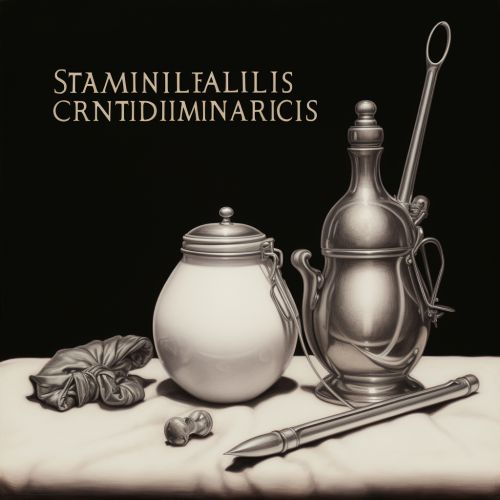Sterile Compounding
Introduction
Sterile compounding is a critical aspect of pharmacy practice, involving the preparation of medications in a sterile environment to prevent contamination. It is a specialized area of pharmacy that requires strict adherence to aseptic techniques to ensure the safety and efficacy of the prepared medications. The practice of sterile compounding includes the preparation of both non-hazardous and Hazardous Drugs, and it is governed by specific regulations and standards to ensure patient safety.


History
The history of sterile compounding dates back to the early 20th century, when the need for sterile medications became apparent with the advent of injectable drugs. The development of sterile compounding has been influenced by advancements in technology, changes in healthcare delivery, and the evolution of pharmacy practice.
Principles of Sterile Compounding
Sterile compounding is based on several key principles, including aseptic technique, contamination control, and quality assurance. These principles guide the preparation of sterile products to ensure their safety, efficacy, and stability.
Aseptic Technique
Aseptic technique is a fundamental principle of sterile compounding. It involves practices and procedures to prevent contamination from pathogens. Aseptic technique includes the use of sterile equipment and supplies, proper hand hygiene, and the use of barriers such as gloves and gowns.
Contamination Control
Contamination control is another critical principle of sterile compounding. It involves measures to prevent the introduction of contaminants into the sterile product during its preparation. This includes the use of cleanrooms and laminar airflow workbenches, as well as proper cleaning and disinfection practices.
Quality Assurance
Quality assurance in sterile compounding involves procedures to ensure that the prepared medications meet the required standards for safety, efficacy, and stability. This includes regular testing of the sterile products, as well as monitoring of the compounding environment and personnel competency.
Regulations and Standards
Sterile compounding is governed by various regulations and standards, including those set by the United States Pharmacopeia (USP), the Food and Drug Administration (FDA), and state pharmacy boards. These regulations and standards provide guidelines for the practice of sterile compounding, including the requirements for facilities, personnel, and procedures.


Sterile Compounding Procedures
The procedures for sterile compounding involve several steps, including the calculation and measurement of ingredients, aseptic mixing and filling, and final quality assurance. These procedures require specialized knowledge and skills, as well as strict adherence to aseptic techniques and contamination control measures.
Calculation and Measurement of Ingredients
The first step in sterile compounding is the calculation and measurement of the ingredients. This involves determining the correct amount of each ingredient based on the prescribed dose, and accurately measuring the ingredients using appropriate tools and equipment.
Aseptic Mixing and Filling
Once the ingredients have been accurately measured, they are mixed and filled in a sterile environment. This involves the use of aseptic techniques to prevent contamination of the sterile product.
Final Quality Assurance
After the sterile product has been prepared, it undergoes final quality assurance. This includes visual inspection for particulates and defects, as well as testing for sterility, potency, and endotoxins.
Training and Certification
Pharmacists and pharmacy technicians involved in sterile compounding must undergo specialized training and certification. This includes education on the principles and procedures of sterile compounding, as well as hands-on training in aseptic techniques and contamination control measures. In addition, they must demonstrate competency through regular assessments and certifications.
Challenges and Future Directions
Sterile compounding faces several challenges, including the need for continuous quality improvement, the management of hazardous drugs, and the need for ongoing education and training. Despite these challenges, the field of sterile compounding continues to evolve, with advancements in technology and practice leading to improved safety and efficacy of sterile products.
